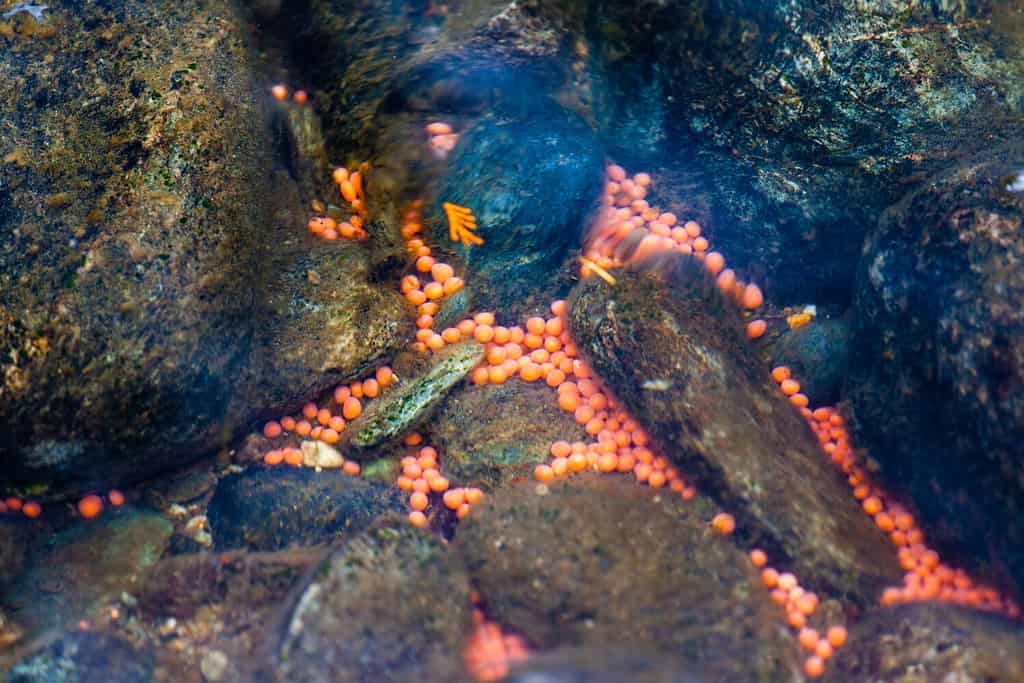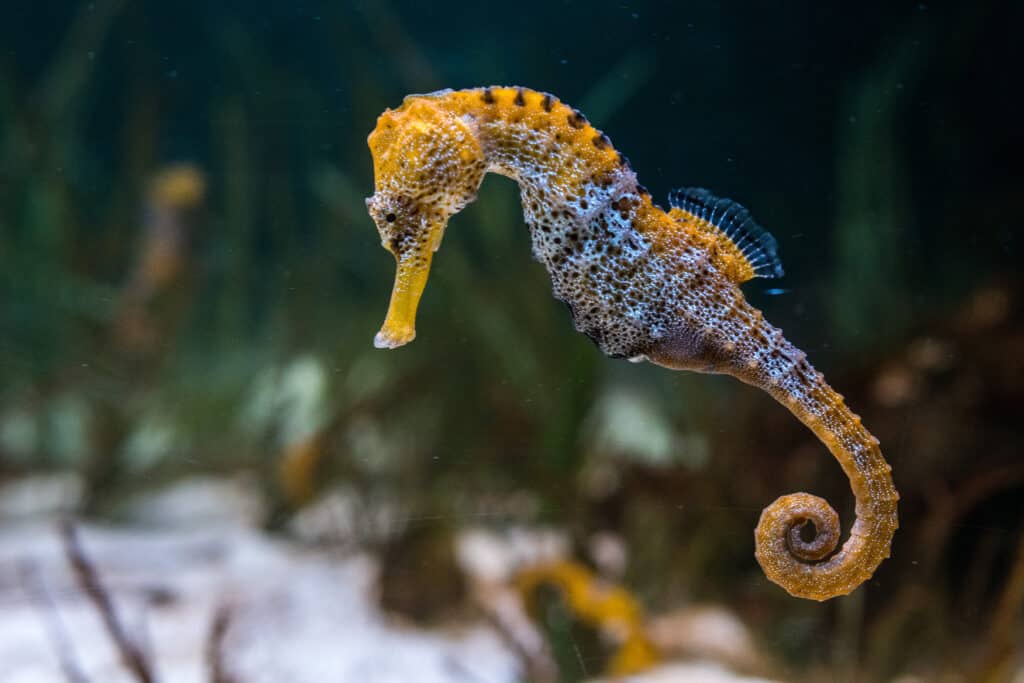Exploring the reproductive behavior of fish is a good way to sample the diversity and versatility of these aquatic vertebrates. The class of vertebrates that we call “fish” include over 34,000 existing species. These animals have more than 450 million years of history, and are distributed across almost every natural body of water on Earth. There are fish without bones, fish that breathe air, and at least one species of fish that’s warm-blooded. Some classes of fish are as different from each other as mammals are from birds or reptiles. So given how diverse this category of animals is, should come as no surprise that fish exhibit a variety of physiological and behavioral adaptations, including reproductive behavior.

While most fish lay eggs, live birth is common among sharks and their relatives.
©iStock.com/Marco_Zucchini
How Fish Mate
Some fish, like salmon or eels, only breed once when they mature and then die off. But most fish species breed multiple times in their adult lives. Broadly speaking, most species of fish reproduce by laying a large number of eggs. In some cases that means hundreds, thousands, or even millions at a time. Only a few offspring will survive and grow into adulthood, hence the need for volume. But this basic scheme comes in a few different variations.
The majority of fish are oviparous, meaning they lay eggs. For the majority of fish species, this means the female lays unfertilized eggs. They’re fertilized when the male releases a cloud of sperm (called milt) into the water. This kind of reproduction is also called spawning. (Sometimes the term is used to describe a large number of fish coming together to release eggs and sperm at the same time.) This behavior might require the adult fish to migrate to a particular area to spawn, as salmon famously do.

The female salmon will lay eggs in riverbed depressions that she has formed using her tail. A male salmon will come along and fertilize the eggs.
©Ronnie Chua/Shutterstock.com
In some species, the eggs are fertilized inside the female before they’re released into the water (or else they develop inside the female). Examples of this are found among rays, sharks, and some aquarium fish like guppies, mollies, and swordtails. Some fish that fertilize internally have specialized organs to transmit the milt into the female’s body.
Some species of fish give birth to live young; this mostly occurs among sharks, rays, and their relatives. In these viviparous fish, the developing young might rely solely on the egg sack for nutrition before they’re born. Or in some cases, the mother’s body provides them with some nutrition. With viviparity the young fish enter the world at a more advanced state, better able to survive, so fewer offspring are produced compared to oviparous fish.
Fish have another strategy to help their reproductive success: hermaphrodism. That’s when a single organism has both male and female reproductive organs and can produce both sperm and eggs. Hermaphrodism, though uncommon, has evolved multiple times in different fish lineages, which suggests it’s a useful trait under the right conditions. Some fish are simultaneous hermaphrodites, meaning they have both sex organs at the same time. But the more typical version is sequential hermaphrodism, meaning a fish starts out as one sex and switches to the other. Clownfish, for example, are male when they’re young, but can become female as adults. The cleaner wrasse, an Indo-Pacific fish, follows the opposite trajectory. If a male is removed from the group, one of the females will develop into a male. Some fish species even change sex in either direction!
Fish Parenting

Below and beyond: Male seahorses carry fertilized eggs in a specialized pouch to protect them.
©Marcos del Mazo/Shutterstock.com
Parental care isn’t much of a thing in the fish world, but it does happen. In fact, in about 30% of fish families (taxonomic families, that is), at least one of the parents engages in some kind of caretaking behavior to protect their eggs and (in some cases) offspring. Most of the time it’s only one parent who does this, most commonly the male. Parental care seems to be more common among fish who live in fresh water. The reason might be that in the ocean, egg predators are rare and the environment is fairly stable. But in freshwater, especially shallower water, conditions change quickly and it’s harder to find a safe space. So fish who defend their territory and their eggs may give their offspring a better chance at surviving.
The most common parenting strategy seen among fish is some kind of egg-protecting behavior. Female salmon and trout, for example, bury their eggs to hide them from predators. Other fish build elaborate protective nests. Some fish guard their eggs, clean them, and/or fan them with their fins to make sure they receive fresh, aerated water. Some fish carry the eggs, or even the hatched juveniles, in their mouths to protect them as they develop, a strategy called mouthbrooding. Male seahorses carry the fertilized eggs in a specialized pouch until they hatch. And in some species, like some cichlid fish, parents will feed their young, or help the juveniles find food, and will signal to them when danger is imminent.
The photo featured at the top of this post is © David A Litman/Shutterstock.com
Thank you for reading! Have some feedback for us? Contact the AZ Animals editorial team.







